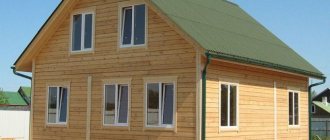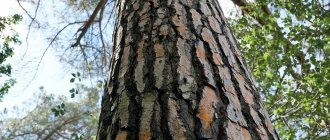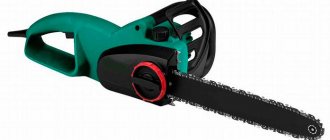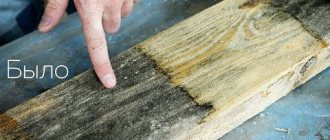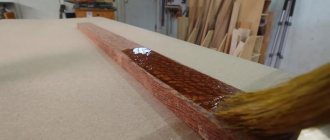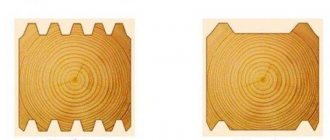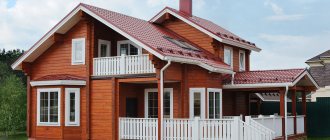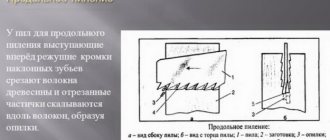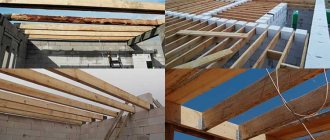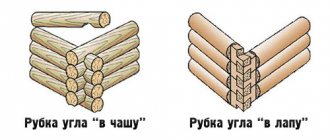None of the most modern building materials can displace natural wood from the market. Houses made of various types of timber are still very popular among developers. They are used to construct both residential buildings and outbuildings, baths, saunas, etc. The technology for constructing log houses requires the mandatory use of inter-crown insulation. Through their use, it is possible to improve the performance characteristics of wooden structures.
Inter-crown insulation for timber
- The heat saving indicators are significantly increased. This is a very important indicator given the high current fuel prices. In some cases, it makes it possible to do without the use of external insulation for the walls of wooden houses, which significantly reduces the estimated cost of construction.
- The service life of wooden buildings increases. Cold and humid air penetrates into the cracks between the crowns, and moisture condenses on the surfaces of the timber. The drying process is lengthy, resulting in accelerated destruction of the wood. It is affected by rot and mold, the strength of the wood is noticeably reduced, and in advanced cases, critical deformations of wooden houses can occur. It is necessary to make complex and expensive repairs, and in some cases they are ineffective.
Inter-crown insulation allows you to extend the life of a wooden house
- Modern inter-crown insulation compensates for annual fluctuations in the linear dimensions of the timber. They have plasticity; if the gaps increase, they expand and eliminate heat loss.
- The premises in the house are better protected from the penetration of street noise. Noise reduction characteristics are directly related to thermal conductivity.
Inter-crown insulation for timber improves the sound absorption properties of walls
The construction industry produces a wide range of inter-crown insulation materials, both in composition and in physical properties and linear parameters. This variety simplifies the choice of a specific type of insulation. But to make the best decision, you should briefly familiarize yourself with the types and characteristics of materials.
Types of inter-crown insulation for timber
Purpose of interventional insulation
Inter-crown insulation is a special type of heat-insulating materials that are laid between the crowns of a wooden building (house, bathhouse, utility room) to eliminate gaps. They can be loose (tow, moss) or in the form of ribbons (felt, batting).
The main task of such insulation is to create comfortable living conditions inside the house. Interventional insulation creates a favorable microclimate only if it can:
- keep the house warm in winter and prevent it from overheating in summer;
- avoid drafts;
Insulation of a log house with moss.
- compensate for changes in the linear dimensions of wood that appear during drying or swelling during changes in environmental humidity (so that cracks do not appear);
- protect owners from unnecessary noise;
- prevent insects from appearing in the house;
The main functions of interventional insulation.
- prevent the colonization of inter-crown space by microorganisms.
In order to perform its assigned functions, inter-crown insulation for timber (logs) must have a certain set of quality characteristics.
Insulation for a house made of edged timber
Linen and jute tow, batting and peat moss are used as inter-crown insulation for houses made of edged logs.
Moss is used to insulate baths and auxiliary buildings. For a residential building, flax or jute material is better suited; strips of batting or tape tow are laid between the crowns, corners and irregularities are caulked with tow. After shrinkage of the log house, additional “finishing” caulking of the seams is done from the outside and inside.
When asked which material is better, experts do not have a unanimous opinion. Jute fibers are more elastic, and linen fibers are soft and elastic; it is better to use flax as tow. When building from edged timber with roughly processed layers, it is recommended to use jute batting; for planed timber, linen insulation is recommended.
The best solution when choosing inter-crown insulation may be flax-jute batting; when constructing from three-edged timber or timber-laft, the inter-crown seams are additionally caulked with linen rope with a diameter of 20 mm.
Operational Requirements
High-quality insulation for the crowns of a wooden house must have:
- low level of thermal conductivity to ensure minimal heat loss - the best performance for natural materials;
- high vapor permeability - the walls must breathe, ensuring natural air exchange between the street and the room;
- the ability to absorb moisture well and quickly release it (dry), which allows you to maintain the same moisture content of the timber or log around the entire circumference (the processes of the occurrence of multidirectional stresses inside the timber, leading to its cracking, and the appearance of mold (rot) between the crowns are eliminated). The best in this indicator are flax and jute, but synthetic heat insulators do not absorb liquid - it remains on the fibers. Therefore, artificial insulation materials are not used in bathhouses - the walls will begin to rot;
- uniform density - there will be no cold bridges;
- high elasticity, which allows you to tightly close the gap between the crowns when the house shrinks and the walls swell or dry out;
- resistance to fungus and mold;
- resistance to ultraviolet radiation (sun) and the vagaries of nature (rain, snow, heat, frost);
- long service life comparable to the durability of a house;
- optimal ratio between thickness and density (indicators are given in Table 1);
Table 1. Optimal ratio of thickness and density.
| Thickness, mm | Density, g/m2 |
| 5 | 400 |
| 6-7 | 600 |
| 8-10 | 600-700 |
| 10-15 | 800 |
- environmentally friendly - does not contain components harmful to health;
- sufficient tape width. There are 2 rules here.
- At frost temperatures of -20oC, the width of the thermal insulator should be at least 10 cm, -30oC - 12 cm or more, -40-50oC - 14-18 cm.
- Insulation that is 5 mm smaller in width than the groove will help you get a beautifully designed inter-crown space. If further insulation of the gap is planned with the same material (caulking), the tape should be 10-15 cm larger than the contact area of the crowns.
Let's sum it up
What material to choose is up to the owner of the house to decide. Each option has its pros and cons. Natural inter-crown insulation, especially combined flax and jute, has the best environmental friendliness.
But, as a rule, such material has a relatively short service life (about 10-20 years), after which you will have to caulk the seams.
Artificial material will last longer, according to manufacturers, up to 50 years or more. However, do not be afraid of its unnatural origin. Modern insulation materials undergo many tests before entering the market. Therefore, they will not cause harm to human health.
From a short video you will learn how to properly install inter-crown insulation.
Synthetic insulation
Synthetic thermal insulation for the gaps between the crowns of the wall is represented by polyester fibers. The general advantages of this type of insulation include:
- durability - manufacturers talk about a service life of 100 years;
- low thermal conductivity coefficient;
- vapor permeability;
- elasticity (volume is restored by 90% after prolonged compression);
- frost resistance.
There are two disadvantages:
- high cost of 1 linear meter;
- do not absorb water, as a result of which a greenhouse effect occurs indoors, and the wood becomes moldy. Therefore, good ventilation of the house and careful wood processing are needed.
The result of using low-quality synthetic inter-crown insulation is fungus at the joints of the crowns.
The best representatives in the segment of synthetic insulation are “Holofiber” and “PoliTerm”.
"Holofiber"
Inter-crown insulation “Holofiber” (translated as “hollow thread”) is one of the varieties of padding polyester known to everyone. It is a springy polyester fiber molded into a tape that perfectly adapts to changes in the linear dimensions of wood during deformation due to shrinkage or changes in humidity. This property is especially valuable for a log house made of sawn timber without grooves. The insulation perfectly holds the volume, ensuring complete tightness, so that re-caulking is not done.
Holofiber insulation.
It goes on sale in rolls and sheets of different densities and elasticity, which allows you to make a choice based on the characteristics of the wood.
Among the advantages :
- excellent elasticity;
- good noise and thermal insulation properties;
- long service life;
- simple installation;
- no need for re-caulking;
- environmental cleanliness;
- resistance against negative biological factors (birds do not carry, insects do not appear).
Negative include :
- “biting” price;
- artificial origin;
- there is a risk of mold or a special type of rot, about which people say: “the tree is rotting.”
"PolyTerm"
Insulation of gaps between the crowns of a wooden house "PoliTerm" is the result of the work of Finnish technologists. Let us immediately note two features:
- when developing the heat insulator, “Holofiber” was taken as a basis, as a result, the result was a type of padding polyester insulation;
- short production period (appeared on the market about 10 years ago), and therefore we cannot give an objective assessment of the advantages and disadvantages of the material (manufacturers can say whatever they want).
What is beyond doubt is:
- convenient release form - in the form of an adhesive tape;
- resistance to any vagaries of nature;
- high price (10-12 times more expensive than jute tape);
- lack of vapor permeability.
Insulation "PolyTerm".
Sold in the form of tapes with a width of 30 to 250 mm and a thickness of 80-200 mm.
Interventional insulation - what materials should not be used
To insulate a wooden house - its external and internal walls, ceilings, roofing - mineral wool, foam rubber, and polyurethane foam are widely used. But are these materials suitable for interventional insulation? Experts answer this question in the negative.
This is explained quite simply. Under the weight of the beams, such thermal insulation materials lose their performance properties. This is especially true for heat preservation and moisture resistance. Thus, highly compressed mineral wool or foam rubber easily allows cold air from outside to enter the room.
To fill the space between the crowns of a wooden house, there are special insulation materials . They can be divided into two main types - natural and synthetic. Each has its own advantages, disadvantages, and operating features. You need to know about them if you are building a house or bathhouse yourself.
Popular manufacturers and prices
On sale inter-crown insulation made from natural plant fibers are represented by the following brands: “Thermo-Hanf”, “Val-Flax”, “ThermoLen” (“ThermoJUT”), “Flaxan”, “Ekoteplin”, “Ecoterm”, “Ekolen”, etc. ., both Russian-made and European manufacturers. More detailed information about them is given in the work: “Review of flax insulation.”
Let us separately note the prices. So, for 1 linear m with a thickness of 5 mm, a width of 15 cm and a density of 450 g/m2 must be laid out for products from:
- flax - 11 rubles;
- jute - 13 rubles;
- jute mixed with flax - 12 rubles.
With changes in thickness and width, as well as density, prices also change.
Synthetic insulation is produced by:
- "Holofiber" - enterprise "Thermopol" (Moscow);
- "Polytherm" is a center for inter-crown insulation (Moscow).
For comparison, we present the price per 1 linear meter. the same parameters as natural fibers - 32.7-43.6 rubles.
The best interventional insulation, according to experts
Both synthetic and natural materials can cope with the task of insulating a house. They have good thermal insulation characteristics. But we shouldn’t forget why many people build wooden houses. The main criterion for choosing this building material is its naturalness. So why ruin the whole eco-friendly picture of the house by using synthetic materials that can cause allergies in residents.
Synthetic insulation can be compared to plastic film; they do not allow air to pass through and prevent wood from breathing. A greenhouse effect occurs in the crown joints, which leads to the formation of mold, fungi and rotting of the wooden material. Therefore, you should not use them, even despite their good thermal insulation characteristics. After all, insulation materials should not harm the main building material.
Another thing is natural inter-crown insulation, we can say that they complement the characteristics of the logs being between their crowns. These materials have good thermal insulation, hygroscopicity, and vapor barrier. They do not interfere with the wood’s breathing and do not interfere with air exchange in the room. Many natural insulation materials have unique bactericidal properties, protecting the home from bacteria. They also contain a lignin component, which prevents the formation of biological agents in the inter-crown space.
Which insulation and in what case to choose
Inter-crown insulation is selected for the type of building and type of log (beam), since the requirements for heat insulation, for example, in a bathhouse and a residential building, are different.
House
For log houses made of pine (the logs are not the same size along the entire length), it is recommended to use any type of insulation. If it is linen or jute inter-crown insulation (felt or batting), the tape should be 15-18 mm thick, with a density of about 800 g/m2, or two layers of flax (jute felt) should be laid, each 8-10 mm thick, with a density of 600 g/m2. For poorly dried wood, you need 3-4 layers of tape insulation with a thickness of 8-10 mm and a density of 500-600 g/m2.
You can use tow or moss. In this case, the thickness of the insulating layer should be around 15 mm. Now let’s clarify which inter-crown insulation for timber to choose:
- glued - any type of insulator with a thickness of 4-6 mm and a density of 300-400 g/m2 is used;
- profiled: thickness - 2-3 mm, density - 250-350 g/m2;
- simply sawn: thickness - 8-10 mm, density - 400-500 g/m2.
For rounded logs, you need a tape 10-12 mm thick and a density of 500-600 g/m2 or tapes 5-6 mm thick and a density of 400 g/m2, which are laid in 2 layers.
Bath
The bathhouse requires inter-crown insulation made from natural fibers (moss, jute, linen) - it does not accumulate moisture (there will be no rot), provides natural air exchange, is resistant to microorganisms, and does not collapse under conditions of elevated temperature and humidity.
As in a residential building, each type of wall requires its own type of insulation. But there is a nuance here: due to the lower static load on the insulation (the bathhouse is smaller in size), heat insulators with other parameters are required, the values of which are given in the table. 2.
Table 2. Basic parameters of insulation for a bath.
| Wall type | Thickness, mm | Density, g/m2 |
| Hand-cut pine log house | 15 | 400-500 |
| Rounded log for a bathhouse | 5-10 | 450-550 |
| Round log for steam room | 5 | 600 |
| Sawn timber | 4 | Z50-450 |
| Profiled timber | 4 | 250-350 |
Overview of thermal insulation material
Natural insulation materials meet all of the above requirements; attempts to develop a synthetic material with similar qualities have so far been unsuccessful. Insulation is produced in the form of tow, natural felt, batting and rope (rope). The base used is flax and jute fibers, sheep wool and peat moss.
- Flax fiber occupies a leading position in the market of natural insulation materials, the fibers are obtained from the stems of the plant of the same name, the stems are crumpled and fluffed on scattering machines, dust and broken fibers are removed by combing, and they are calcined to protect against microorganisms. The fibers are up to 300 mm long, are soft and elastic, and do not split. Linen material is used in the form of loose and strip tow, flax wool, braided rope (rope). The flax fiber cakes, and for several years after completion of construction, the inter-crown cracks must be windowed periodically.
- Jute, exported from South Asian countries, is superior to flax fiber in terms of price and quality. The fibers have a length of up to 500 mm, are rigid, do not break or cake. Used in the form of tape tow, batting and felt. Hard fibers create air microchambers, which are an attractive environment for insects and microorganisms.
- The material “flax-jute” consists of flax and jute fibers in various proportions, jute fibers create the frame, and flax fibers fill the resulting cavities. It is produced in the form of batting and felt; according to experts, it is the best inter-crown insulation for buildings made of timber.
- Felt made from sheep wool is made from recycling waste, the material is elastic, the fibers straighten out after laying and evenly fill all free space. The material is environmentally friendly and absorbs excess moisture well. Wool is a breeding ground for moths; this deficiency is countered by treatment with mineral salts.
- Peat moss is the most accessible and cheapest material; it comes to the retail chain in bunches; its consistency resembles cotton wool; you can prepare the moss yourself. The material is a natural antiseptic. Moss is placed between the crowns with a reserve; the edges of the material protrude from the cracks, which gives the facade an unpresentable appearance.
For centuries, hemp - hemp fibers - has been considered the traditional inter-crown insulation in Russia; due to restrictions on the cultivation of hemp, hemp tow is produced in small batches.
Materials and tools
To insulate the gaps between the crowns you will need:
- interventional insulation;
- hook for removing old caulk;
- Lebeza (flat spatula) for caulking - needed for sealing cracks;
- flat chisel - seals seams in corners;
- lebeza (narrow thin wedge) to expand the grooves;
- triangular caulk with a groove - it is used to form rollers;
- disk for caulking thin grooves;
Caulking tools. a - hook for removing old caulk; b - swan for caulking; c - winch for expanding the grooves; g - disk for caulking thin grooves.
- wooden mallet - helps to hammer the insulation into the cracks;
- construction stapler.
Avatherm
Synthetic material. Created on the basis of polyesters and has Finnish roots. Three significant advantages over natural insulation:
- Life time. Manufacturers claim that the service life of the material reaches 200 years, and this is more than enough for a wooden structure.
- Lack of interest in birds. Only natural insulators are suitable for birds.
- Avatherm is a fire-resistant material, which is of particular importance when constructing a wooden structure.
The seal is available in the form of strips of different lengths and widths. Thickness options available: 8.15 and 20 mm. The width can be 100-200 mm. "Avaterm" is sold in rolls 10-20 meters long, depending on the thickness. Options are also available for laminated timber.
Avatherm
The price of the material is also quite reasonable.
Technology for insulating inter-crown gaps
Carefully following the instructions for insulating the gaps between the crowns will not help achieve the expected effect if some rules are not followed:
- insulation should be carried out in warm weather;
- the surface of the wood must be dried and cleaned of debris;
- the material is laid in the same layer throughout the entire frame. In this case, you need to look for the “golden mean”, because if the tape is too thick, there will be no normal shrinkage (it will affect it over time), and if it is thin, drafts will appear (you can see the relationship between thickness and density above);
- work is carried out from the bottom up and immediately along the perimeter of the crown. It is forbidden to insulate several cracks between beams on one wall at once, ignoring other walls (there is a risk of distortion during shrinkage);
- the material laid on the log is grabbed in several places with a stapler;
- no rolling of insulating tape into bundles;
- The edges of the tape should not hang from the wall.
The rules are simple. Their implementation is not difficult. Installation of interventional insulation is carried out in several stages.
Stage I. The wood is dried and treated with antiseptics and fire retardants. Materials and tools are being prepared.
Stage II. Thermal insulation is laid between the crowns.
Stage III. The walls are caulked - the gaps between the crowns are tightly filled. It is carried out twice: immediately after insulation and 1-1.5 years after the house shrinks.
Advantages of jute
Safety
The insulation must be safe for human health. In the bath we enjoy the smell of natural wood and get healthier, so the materials used should not contain any harmful components.
Fire resistance
The insulation for a bath should not flare up from every little spark. Experts recommend using materials no higher than the second flammability group.
Biological resistance
The insulation should not attract the interest of birds and allow the emergence and proliferation of various fungi and bacteria.
Vapor permeability
In a steam room, humidity and temperature constantly fluctuate, and condensation of water in the inter-crown space can only be avoided by using materials with a good ability to transmit moisture without rotting the wood
Therefore, pay attention to the coefficient of vapor and air permeability of the material
Country bathhouse
Durability
Good insulation lasts as long as the structure itself, and at the same time maintains its integrity and elasticity throughout the entire period of use.
Methods for insulating gaps
Regardless of the chosen insulation material, the tape is laid using several methods:
- without fold;
- with one-sided fold;
- with double-sided bend (see picture).
Scheme of laying tape insulation.
No bend. This method is only suitable for laminated timber, when when laying the crowns small technological gaps are obtained. The tape is rolled out along the top of the beam (log) on all walls and secured with a construction stapler. After this, the next crown is laid.
With one-sided bend. The method is used for timber with minor deviations in linear dimensions. To do this, take a strip of insulation that is 2 times the width of the log. Laying is carried out by bending into the room. From the outside, a rope made of jute or flax is driven into the gap.
With double-sided bend. For wall materials with different sizes at the ends (hand-chopped or rounded logs), the insulation tape is folded on both sides.
When insulating with moss or tow, they are laid in approximately the same thickness along the entire length of the log, so that the insulation hangs approximately 5 cm on each side.
Caulking gaps
There are several technologies for caulking walls:
- for tape insulation;
- for moss and tow “stretched”;
- moss and tow “set”.
Caulking grooves with moss. a - “stretch”; b - “set”. 1 - finished groove; 2 - driving in moss; 3 — addition of moss; 4 - moss.
Caulk with tape insulation. The work is performed step by step in the following sequence:
- stretch, without cutting, the tape along the wall from one to the second corner, without twisting it or pulling it;
- return to the beginning and, using a caulking tool (you can use a chisel), lightly push one side of the insulation into the crack along the entire length of the wall (do not hammer it in with force, but rather attach it so that it holds). After passing to the second corner, cut the tape to a tolerance of 10-20 cm. If there are narrower gaps, they are widened using a special tool - winches for widening the cracks;
- roll the tape into a roller and caulk the wall. The insulation must be hammered in carefully to prevent waves. The work is considered completed only after the heat insulator completely disappears into the gap;
Technique for caulking panels with tape insulation.
- repeat the entire process starting from the first step. For those who have doubts, we give a certificate: to caulk walls you need 4 times more material than is used for primary insulation.
Caulking "stretched". The “stretch” caulking method is used for narrow gaps between the crowns. The work is performed in two steps:
- moss or tow is knocked into the gap with a swan or a chisel (not a sharp one - it will cut the insulation) along the entire length of the wall;
Caulk of tow.
- With the help of a mallet and a wedge, the moss is driven into the gap between the timber (logs).
Caulk “set”. The technology is similar to caulking walls insulated with tape. Take the tape and stretch it along the entire length of the wall. After this, one side is hammered into the gap. After passing along the entire length, the tape is twisted into a roller and driven into the gap.
The house is in the process of being caulked.
Step-by-step instructions for laying insulation
As an example, we will take the most complex version of a house - hand-assembled from timber with natural moisture. Insulation is done using roll insulation; there are no differences in installation technology between natural and artificial materials.
Select the insulation of the required width
Step 1. Buy insulation, first calculate the required amount and decide on the size. To calculate the amount of insulation, you need to know the dimensions of the external walls and the number of rows of the log house. Sum up all linear meters and increase the quantity by about 5–8%. The excess will be needed for reliable thermal insulation of the corners of the log house. The width of the insulation should be 5–10 cm greater than the width of the recess of the beams, the thickness should be from five millimeters. The protruding part is caulked or immediately bent during the assembly of the log house.
What are the advantages and disadvantages of technology?
- Insulation caulk. Performed after complete shrinkage of the structure. Advantages: better insulation, minimizes the risk of forming cold bridges. Disadvantages: the amount of manual work increases, some types of insulation are stolen by birds, and during the rainy season, hanging insulation absorbs a lot of moisture. And this can cause the timber to rot in the contact areas.
- Bend the insulation during assembly. The wide edges of the material are folded and fixed in this position with a stapler. The hem is made flush with the edges of the sample of logs. Advantages: the assembly of the house is accelerated. Disadvantages: during shrinkage of logs, the insulation may be damaged; to eliminate the problems, you will need finishing caulking with jute rope.
There is no consensus among professional builders which method is better. Each of them works according to their usual scheme. We will consider both options for laying insulation.
Step 2. Turn the timber over with the groove facing up.
Important. If the width of the jute does not reach the edges, then buy wider material or lay narrow insulation in two rows overlapping each other. The width of the material should protrude approximately five centimeters on each side of the log.
Secure the jute with a stapler, the distance between the staples is approximately ten centimeters. Make sure that when turning the timber over for laying in the log house, the insulation does not sag or fall off.
Secure the insulation with a stapler
Step 3. If you are going to caulk, then leave the edges protruding. But you need to keep in mind the disadvantages of this method, which we discussed above. In addition, protruding jute does not allow you to control the quality of the house’s assembly; it covers the joints, and defects of the builders are discovered during caulking.
The second option is to immediately bend the protruding insulation and secure the bend with a stapler. Try to make the bend even, it should look neat after the house is assembled. The doubled thickness of the insulation at the edges significantly improves the quality of sealing of the crowns.
Fixing insulation with hemming of edges
Step 4. From the ends of the log, remove the ends protruding onto the street for a length of about 5 cm. If they hang down, moisture gets into the contact areas of the logs and the tree begins to rot. Once the house is assembled, the ends are caulked separately in good dry weather. This takes little time and is technologically quite justified.
The protruding ends of the insulation will be caulked
Step 5. Carefully insulate the bowl. Jute must be fixed on all adjacent surfaces; to improve the quality in these places, it is better to lay two layers of insulator. There is no need to be afraid that the crowns will sag; the inter-crown insulation is easily compressed. Always remember that corners are considered the most problematic element of wooden houses; pay great attention to them.
If during assembly the insulation becomes wrinkled or comes off, then you should not be lazy, remove the log and repeat everything all over again.
How to caulk interventional insulation
To perform caulking, you need to have a hammer, a chisel 20 mm wide, a spatula 40 mm wide, and a rubber or wooden mallet. Tools should not be sharp, otherwise they may cut through the insulation.
Caulking tools
Caulking tools
Important. Caulking is allowed only after the insulation tape has completely dried. The log house must settle and shrink; this requires about a year after the completion of the assembly of the structure. You need to bend the seal from top to bottom and lightly tap it into the gap between the beams. The result should be an even, tight bend and all cracks should be hermetically sealed. If the groove of the log has not completely settled into place, then there is no need to caulk it heavily. The final compaction is done after shrinkage; at the first stage, the jute is only slightly tucked and fixed in the crack. The driving is done later.
Caulking should be started from the lowest row, then work is carried out around the circle of the log house, after completing the caulking along the perimeter of one crown, you can begin to work with the second.
Start of caulking work
The insulation gets stuck in the crack
Work is carried out along the perimeter, starting from the lower crowns
Important. Never caulk just one wall at a time. Such actions can cause distortion of the entire structure.
There is no need to heavily hammer the seal into the upper rows; they are the last to shrink after several years of operation of the building. Carefully trim the corners, do not allow water to get between adjacent crowns. If the house was assembled by careless builders, then the insulation of the bowl is problematic. They only placed the tape in the middle of the bowl, there is no lip at the edges. We have already mentioned that insulation in bowls must be laid in two layers. If the ends of the building are insulated in violation of the optimal technology, then before caulking you will have to first push the tape into the unfilled space, and then caulk it. The quality of insulation will suffer a little, but this is the only way to correct deviations from the technology when assembling a wooden building.
Another option for caulking - the ends of the insulation are hammered into the gap between the beams along the entire row
The free ends of the insulation are tucked in
The insulation is driven into the crack
It turns out to be an even neat row
To improve the appearance of facade walls, the seams can be covered with jute rope. Work should be done only after painting the walls, the rope is nailed down. To improve the design, you can coat it with colorless varnish or change the natural color of the rope.
Jute rope for finishing log houses and beams
Caulking rope
Prices for jute rope
Jute rope
An alternative to interventional insulation
Sometimes sealants are used instead of standard insulation. The decision is ambiguous. On the one hand, it’s quick and simple, on the other, it’s expensive and there’s a high risk of mold and mildew in the area of the gaps (the sealant doesn’t allow steam to pass through).
Alternatively, sealant can be used to create beautiful seams inside the house.
Seal the gap with sealant.
In conclusion, properly insulating the gaps between the crowns creates a comfortable living environment in the house. The work is not difficult - the whole process can be done with your own hands.
Why is the outer surface of the walls of the house not insulated?
One of the advantages of laminated veneer lumber is that the material itself does not need to be insulated directly. Its thermal conductivity is significantly higher than that of masonry, concrete and solid wood.
Deep cracks do not form in laminated timber, so the material resists heat transfer equally well at every point. The high thermal performance of laminated veneer lumber has been repeatedly proven by special thermographic examinations of such houses.
Covering timber walls with thermal insulation boards is also undesirable from an aesthetic point of view. The smooth, high-quality planed surface of natural wood looks very attractive, this is one of the reasons for the popularity of this building material.
Necessity
The joint of logs is the weakest point of a log structure. Firstly, this is where the wall thickness is smallest, and secondly, initially it is an open gap into which moisture and wind can penetrate. To protect this “deprived” area of a wooden house, insulation for logs is used.
This material performs several important functions at once:
- Reliably isolates the space between the crowns of the house, inaccessible for inspection, from water and moisture, which, over time, can seriously damage the house;
- Does not allow air to blow through the cracks between the logs;
- Compensates for changes in wood volume that occur due to seasonality and changes in temperature and humidity.
The timber is insulated both at the construction stage and after, the so-called caulking of the log house.
As a conclusion: the inter-crown seal serves not only as a heat insulator , but also:
- Performs waterproofing functions;
- Increases the service life of the building.
The choice of such material must be approached very carefully.
Log house
In fact, there is no point in insulating a log bathhouse, since wood itself is an excellent heat insulator.
In addition, due to additional insulation, the area of the bathhouse is reduced.
Thus, if you are still hesitant about insulating a log bath, then you should know the following facts about the thermal insulation characteristics of a log house, depending on its diameter:
- More than 20 cm – there is no need for additional insulation;
- 15 cm – thermal insulation is not necessary, but heating the room will take a long time;
- 10 cm – thermal insulation of the room is necessary.
Information. A steam room with log walls has a very positive effect on the human body, since the steam from the stove is reflected from them and creates a healthier atmosphere.
How to lay material - step by step guide
Let's consider the process of insulating a house built from logs of natural moisture. This is a rather complicated option. In the example, roll insulation is used.
The insulation must have a suitable width
Step 1. First, the required amount of insulation is purchased. To find out this number, the external walls are measured and the number of rows is determined. Then the linear meters are summed up, a small margin (5-8%) is added, necessary for high-quality thermal insulation of the corners
It is important that the width of the material exceeds the same figure for the excavation of the timber by about 5-10 cm. The recommended thickness of the insulation is at least 5 mm
The part that protrudes must be folded during assembly or caulked. Let's look at the features of both options.
- Hem In this case, the wide edges of the insulation are folded and then secured with a stapler. Thanks to this, the assembly of the house is accelerated, but in the future, when the timber shrinks, the material can be damaged (the problem can be solved by finishing caulking using jute rope).
- Caulk. It is performed after the shrinkage of the building is completed. As a result, the insulation is of higher quality, and the risk of cold bridges is minimal. However, the amount of manual work increases noticeably, hanging material can absorb moisture, and some of its varieties are pulled away by birds.
Step 2. The timber is laid with the groove facing up. The jute is fixed with a stapler in 10 cm increments. Then you need to make sure that when turning the timber over, the material holds tightly and does not sag.
The material is fixed with a stapler
Step 3. If caulking will be done, the protruding edges of the material are left. However, it should be remembered that the protruding insulation will not allow for quality control of the assembly, since it will cover the joints. Possible defects will be revealed only after caulking.
As an option, the edges of the material can be folded and secured with a stapler. The bend should be smooth and neat.
The insulation is attached with folded edges
Step 4. The protruding edges at the ends of the timber are removed - you need to leave about 5 cm. When the house is assembled, the ends need to be caulked separately, and always in dry weather. Fortunately, this won’t take much time.
The protruding ends of the insulation will be caulked
Step 5. The bowl is insulated. Jute is fixed on all surfaces that are adjacent, and it is better to do this in two layers for better quality
In general, you should pay a lot of attention to corners, because they are the most problematic areas of any wooden house
Old timers
There are materials that were used for our purpose in ancient times, since a wooden structure in Rus' is not at all a novelty. Let's see which interventional insulation is better.
Moss
There are several hundred varieties of moss, but only two of them are used in construction. These are sphagnum moss and cuckoo flax. The first one is white, and the second one is red.
Sphagnum moss has very high insulating properties. Compared to its brother, it has a lighter color. It contains antiseptic substances. It owes its use not only in construction, but also in medicine to the latter.
Sphagnum moss
Flax can be harvested by hand, but since this is a northern plant, it is not available in all regions. There are organizations that sell moss briquettes for construction.
After collection, the moss needs to dry. However, the rash process does not last long - 1-2 weeks. By purchasing sphagnum from a construction company, you receive a ready-to-use product. However, completely dry moss is never used for insulation. After laying on the beam and pressing down with the upper crown, the moss should release juice containing all the same notorious antiseptic substances, which in the future will protect the lower frame from rotting and insects.
The moss is placed on the crowns in large piles, which are pressed down by the next log. If you put a small amount, cracks and even through holes may form after drying. It is necessary to make an overlap on the walls. In this case, you can caulk the timber after it dries.
- Buildings insulated with moss have a special aroma. People suffering from asthma feel relief in such buildings.
- Moss is hygroscopic - it absorbs moisture and leaves the log dry. Natural, vapor-permeable material does not harm, but rather creates a microclimate in the house.
- The disadvantage of moss is the difficulty of laying when installing the timber, as well as the interest from birds. These creatures also prefer to use natural rather than synthetic materials for their nests.
Features of laying moss and tow
Moss and tow attract birds. Therefore, to caulk the external contour of the house, you need to work out the seams especially carefully. First of all, moss or tow fibers are placed on one side into the seam. Then, using a special spatula, you need to push the second end of the material and all the fiber into the seam. This must be done carefully; after caulking there should be no hanging ends of the insulation left. Otherwise, within a few months the moss will be torn apart by birds.
Inter-crown insulation is necessary to create a warm log room, free from drafts and dust. Wood reveals all its properties only with proper insulation. But interventional insulation is easy to carry out at the construction stage. With good insulation, the building will become stronger and last for many years.


